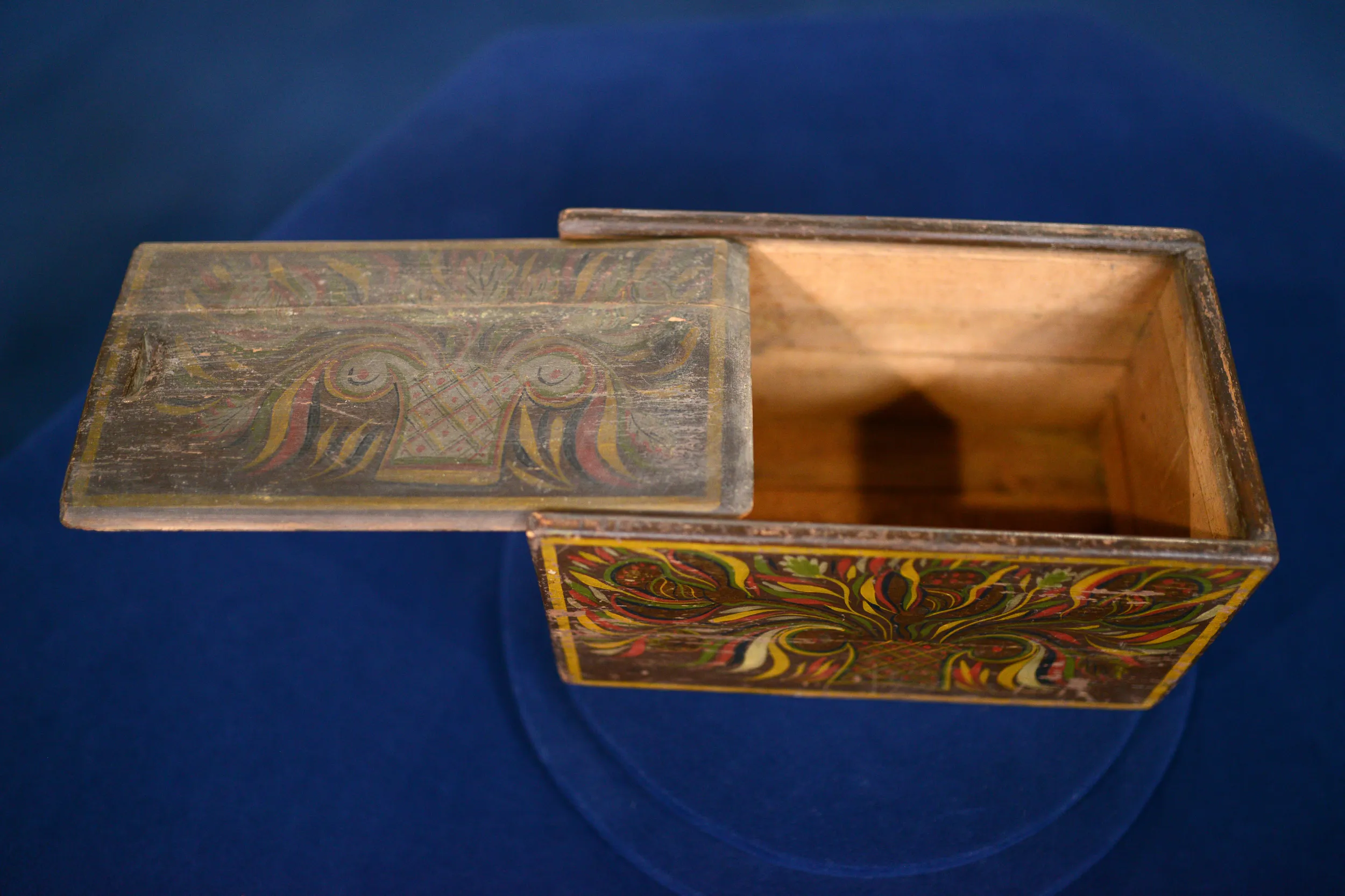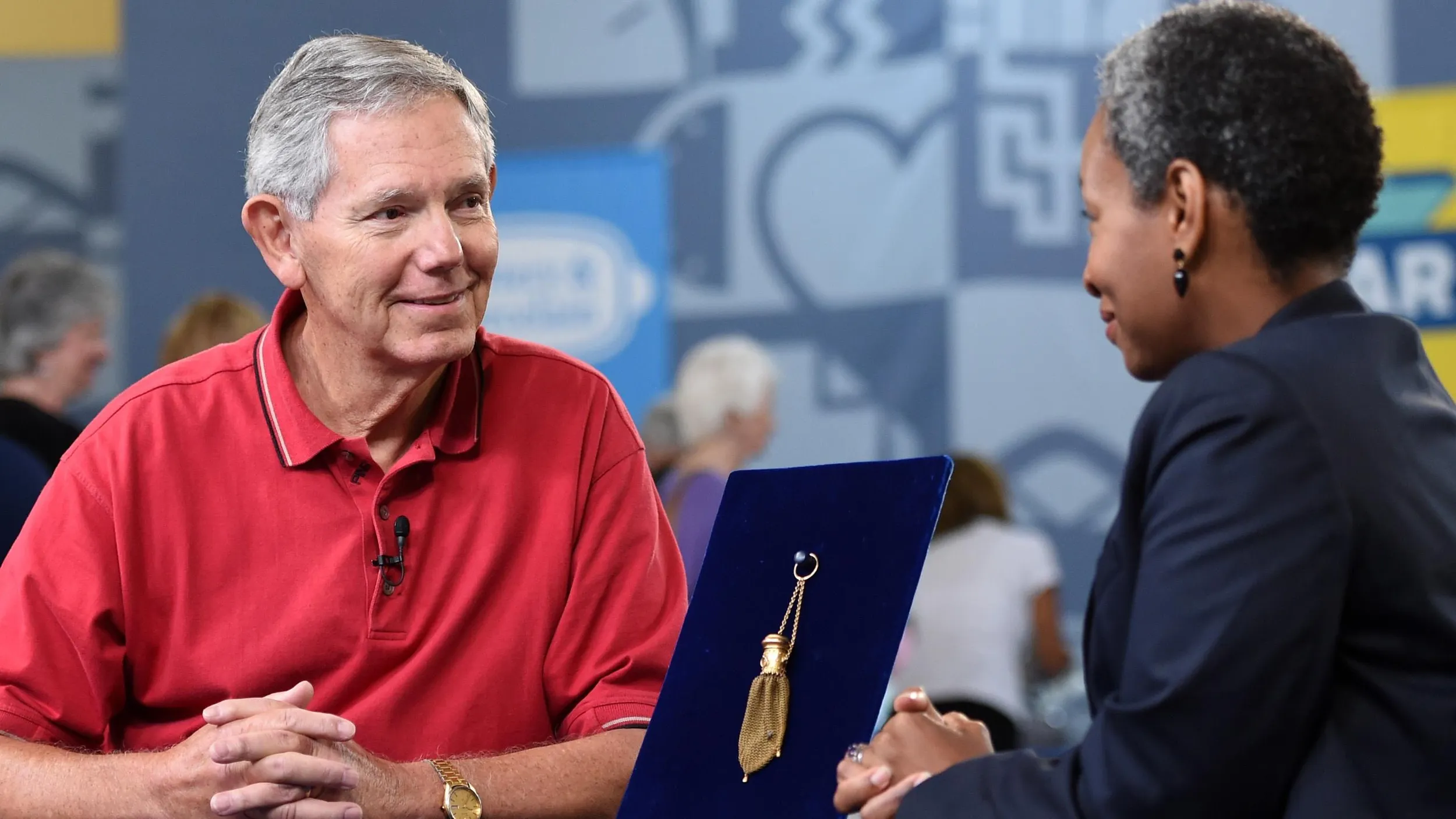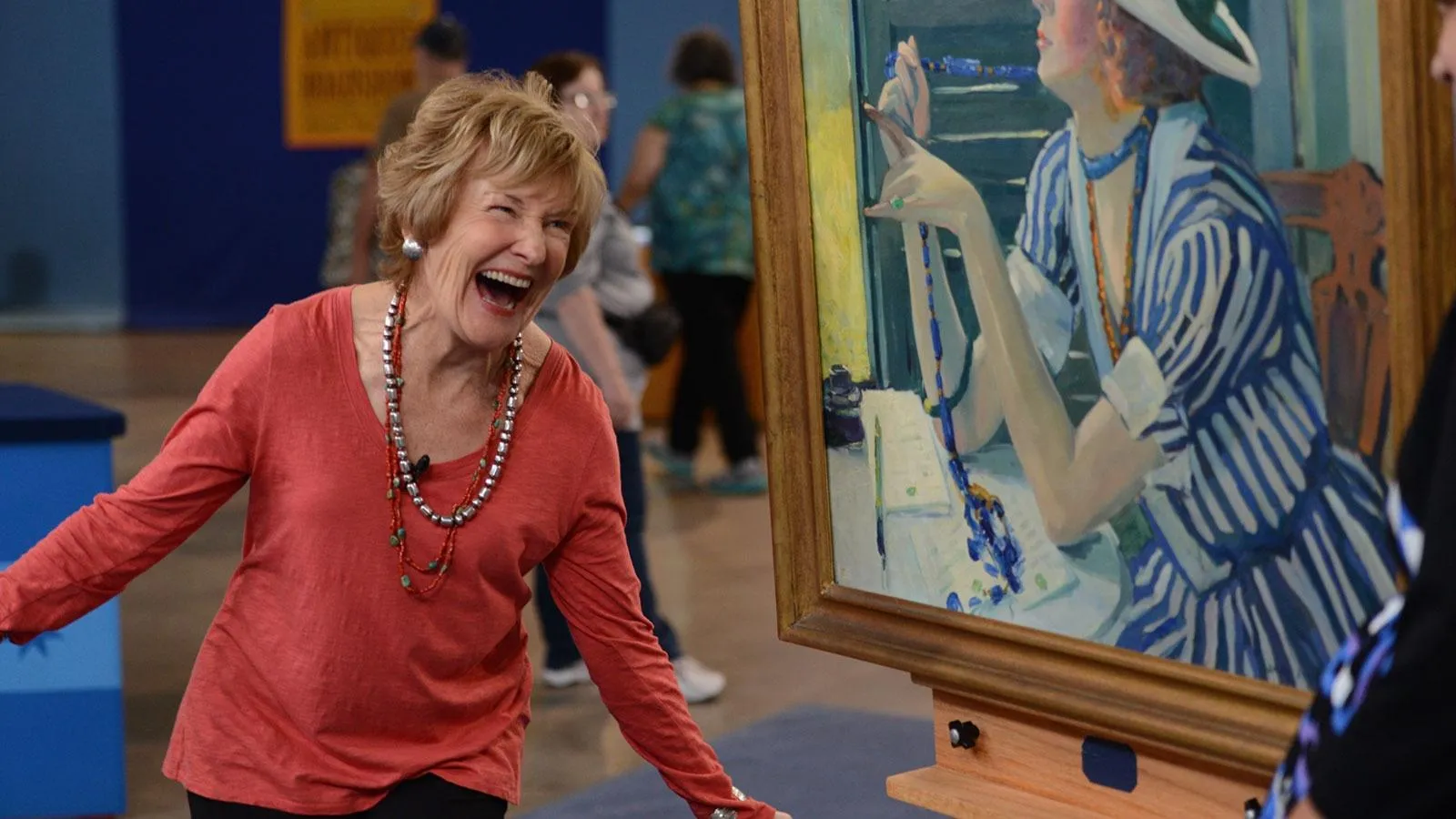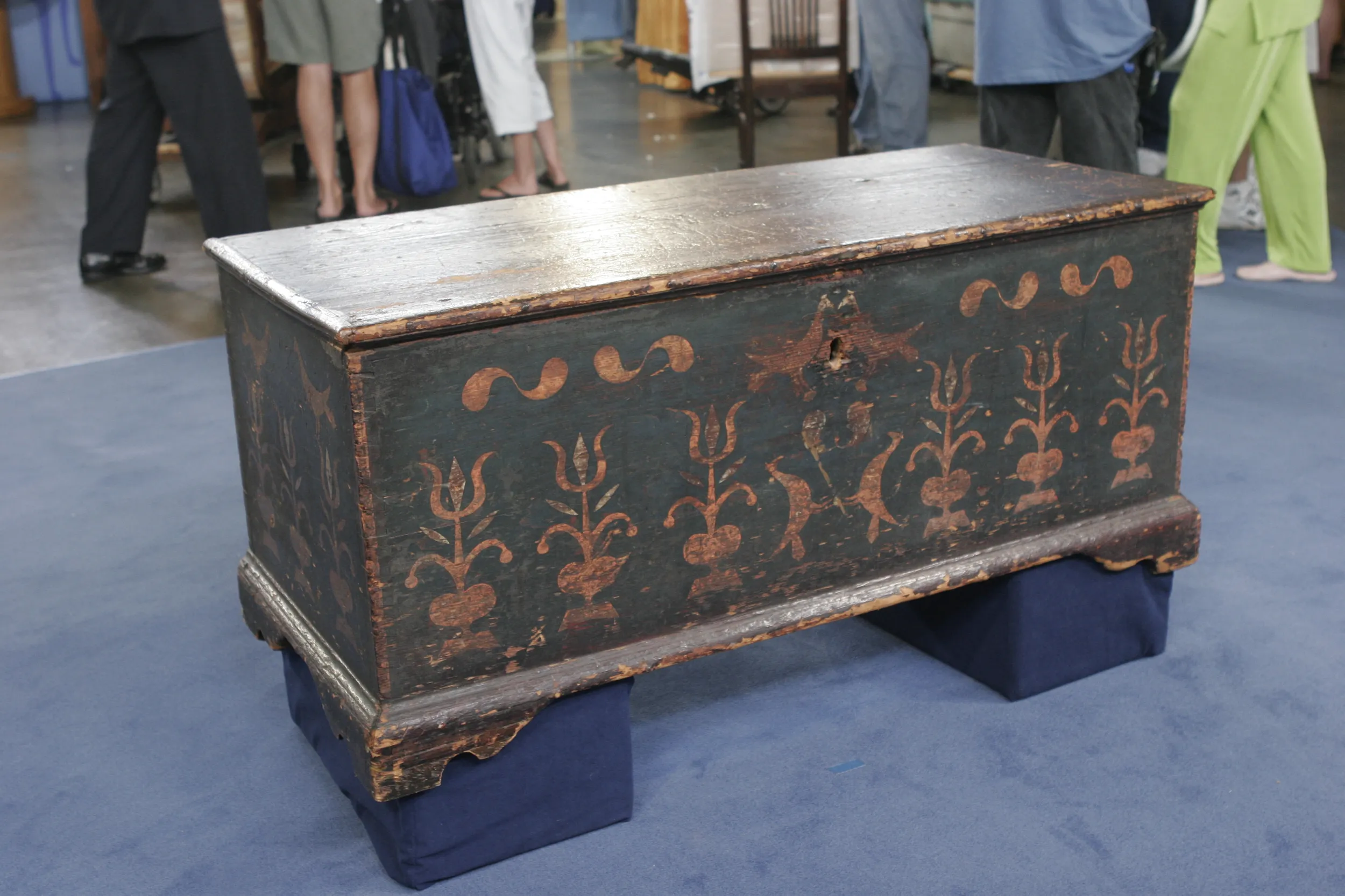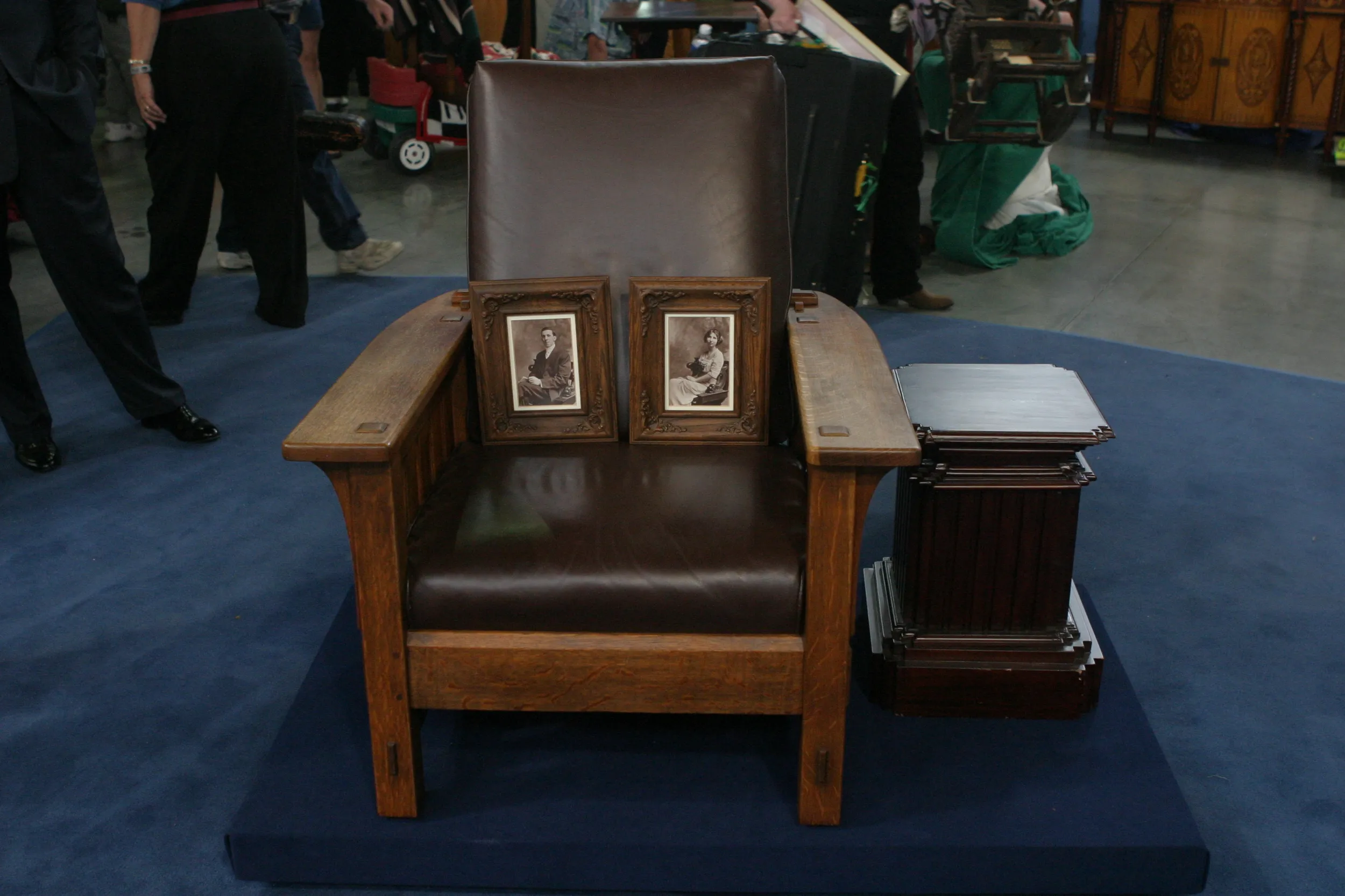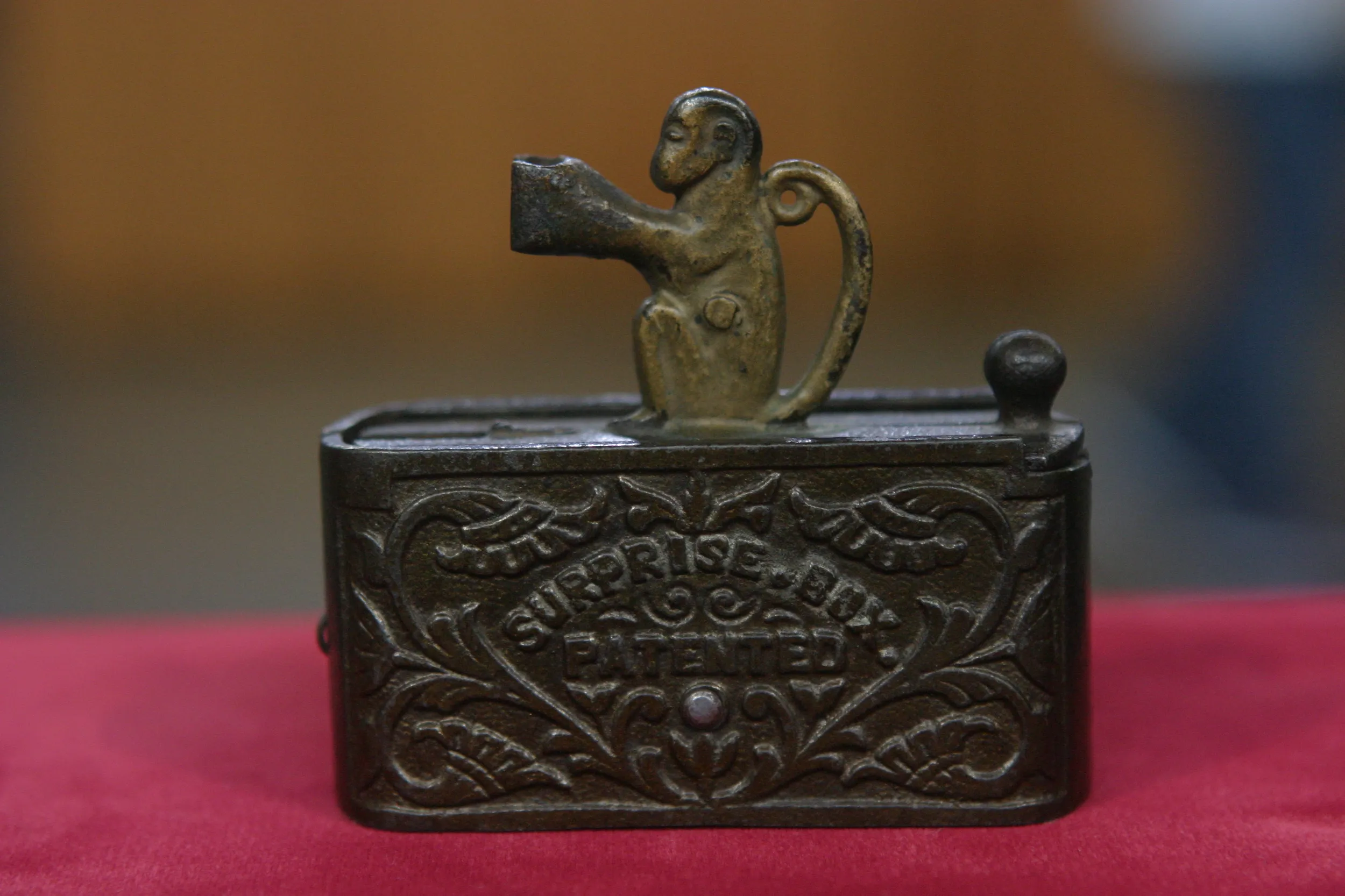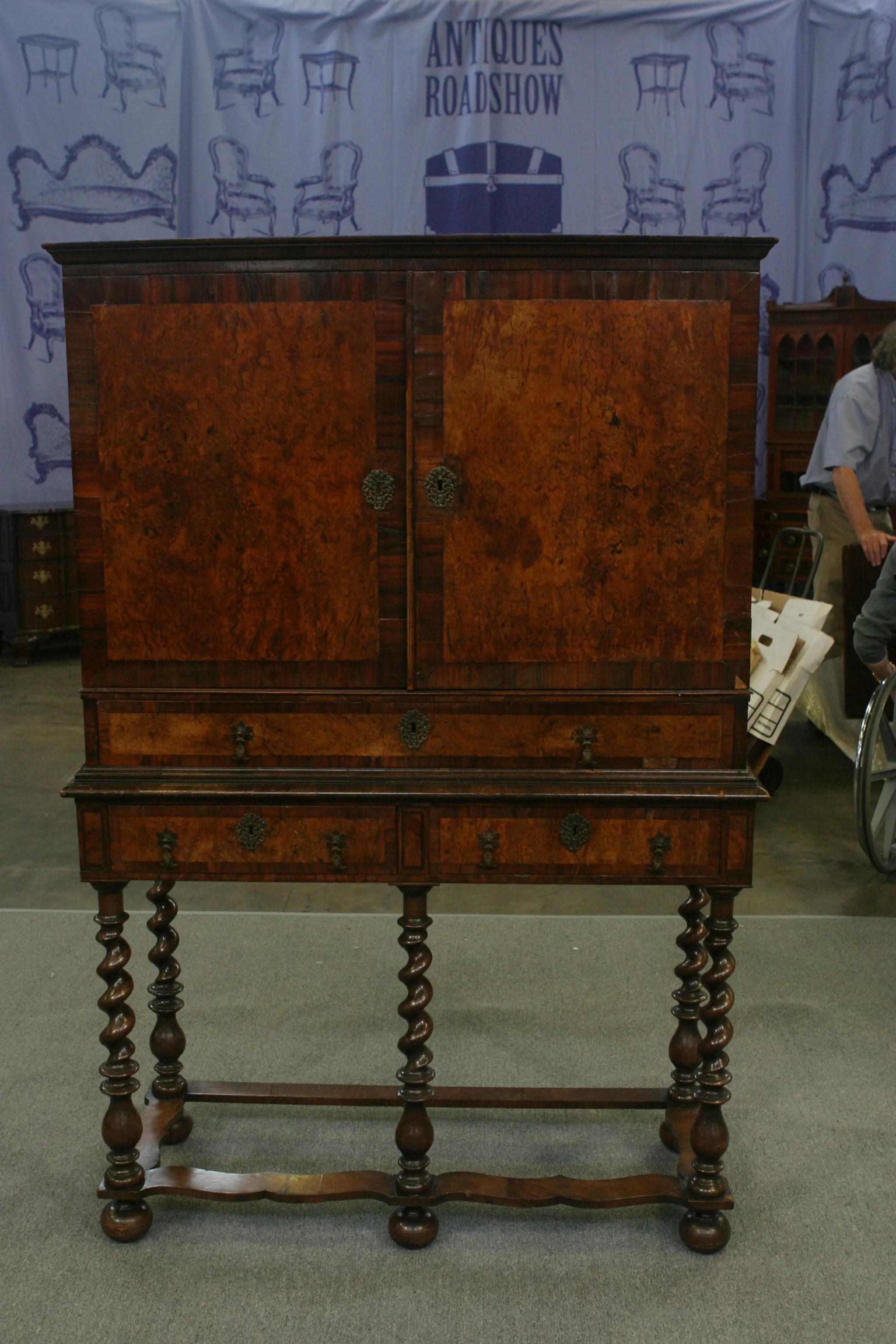GUEST: I think it's a candle box.
APPRAISER: Okay.
GUEST: I bought it recently.
APPRAISER: At a shop or something?
GUEST: At an antique mall. The asking price was $35, and I got a ten percent discount, so I paid $31.50.
APPRAISER: It is, in fact, a candle box. We have a painted box with a sliding top. So here on the side, we have this wonderful, really explosive basket of flowers. It is this really creative American floral motif that's coming out of somebody's, in, mind, right?
GUEST: Mm-hmm, right.
APPRAISER: In the 19th century.
GUEST: (chuckles)
APPRAISER: Okay?
GUEST: Okay?
APPRAISER: That folk appeal, that, that raw combination of colors...
GUEST: Mm-hmm.
APPRAISER: ...makes it powerful.
GUEST: Mm-hmm.
APPRAISER: As folk art.
GUEST: Mm-hmm.
APPRAISER: On the top is the same basket, of course. But it's covered with dust because...
GUEST: Mm-hmm.
APPRAISER: ...dust settles on a horizontal surface.
GUEST: Uh-huh.
APPRAISER: It's a sliding top, and that's typical of candle boxes.
GUEST: Mm-hmm.
APPRAISER: And the thing is, at this point in the early, in the 19th century, this box made about 1830
GUEST: Mm-hmm.
APPRAISER: 1845, right? In that period. They were still using tallow. It was made of animal fat.
GUEST: Mm-hmm.
APPRAISER: And mice, those little critters, mice...
GUEST: Oh!
APPRAISER: ...really loved to get at that animal fat. So they had to be in a box somewhere where it's sealed up, and a sliding top actually sealed it.
GUEST: I didn't know that! Oh, that's great!
APPRAISER: Yeah, isn't that cool? I've seen candle boxes with, uh, the corners chewed, with holes in it.
GUEST: Oh, mm-hmm.
APPRAISER: If we turn it around and see the end of it, I love this color here. This one, single flower coming up, and you have the yellow band around it, right? And the interesting thing I thought, I found this fascinating, is that that backside is not painted.
GUEST: You're right.
APPRAISER: We don't think that that was ever painted. I mean, when...
GUEST: Mm-hmm.
APPRAISER: You can see on the, if we go to the other end, that this board, this exact board has paint on it.
GUEST: Uh-huh.
APPRAISER: It's not a replaced board. But the one thing is that it makes sense, uh, as, like, why bother? That's up on the wall.
GUEST: Yeah.
APPRAISER: What's powerful about folk art is that it's un, by untrained artists.
GUEST: Mm-hmm.
APPRAISER: It has the appeal, the brightness, and this would brighten up a room. What do you think it's worth? I mean, you paid $31.50.
GUEST: Mm-hmm. Uh...
APPRAISER: Will you double your money?
GUEST: $400.
APPRAISER: That's a good guess. But I'd multiply that by ten. Yeah.
GUEST: Oh, oh, my gosh!
APPRAISER: Yeah, yeah, yeah, yeah.
GUEST: (laughs)
APPRAISER: Yeah. (laughs)
GUEST: Oh, my gosh!
APPRAISER: I know!
GUEST AND APPRAISER: (both laughing)
GUEST: Wow!
APPRAISER: You're gonna be having piña coladas with your friends?
GUEST: Yes, we are! (laughing)
APPRAISER: Tonight? So an auction estimate on this, on this painted Pennsylvania box, would be $3,000 to $4,000.
GUEST: Oh, that's wonderful!
APPRAISER: And a, on a... On a good day, it could bring, it could bring $5,000.
GUEST: That's fantastic!

